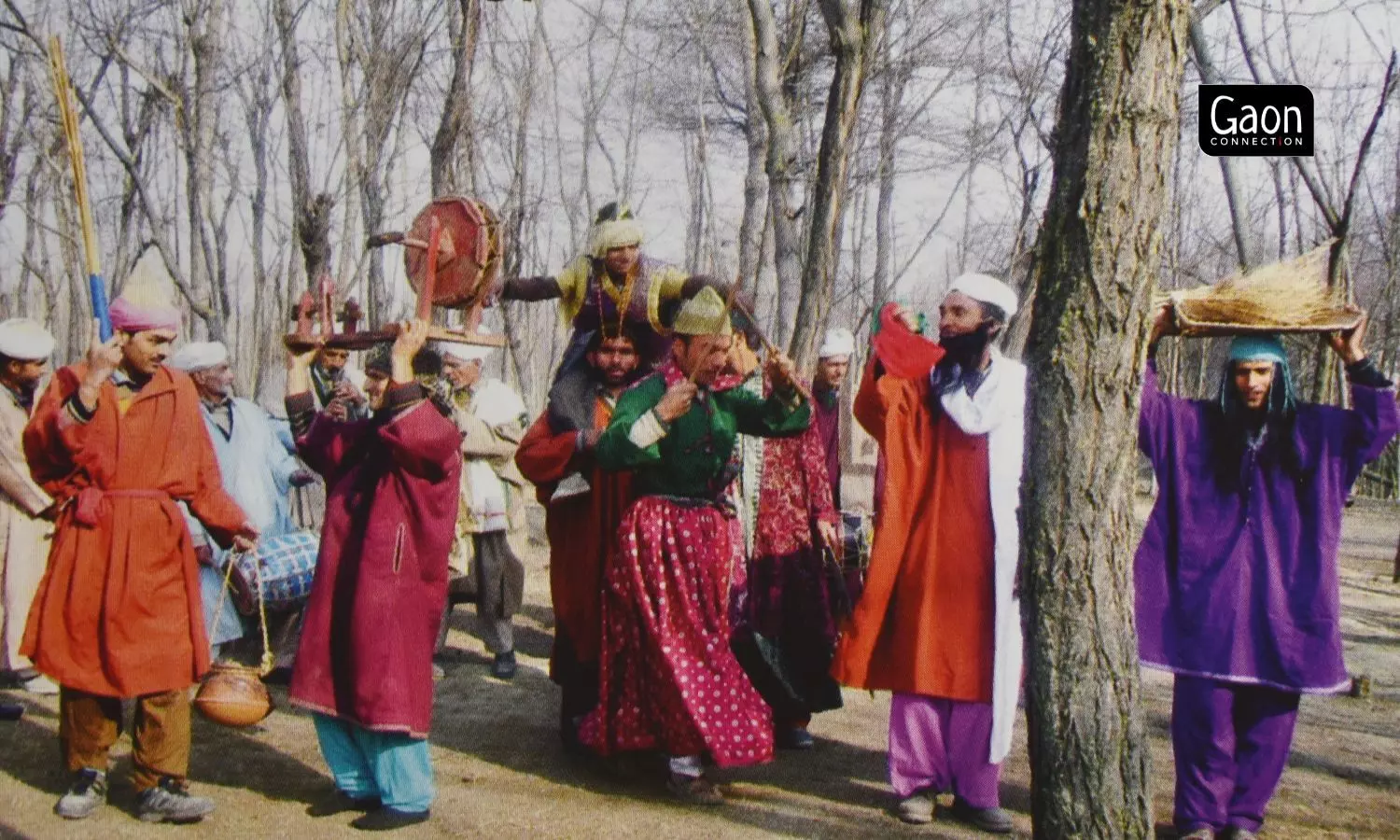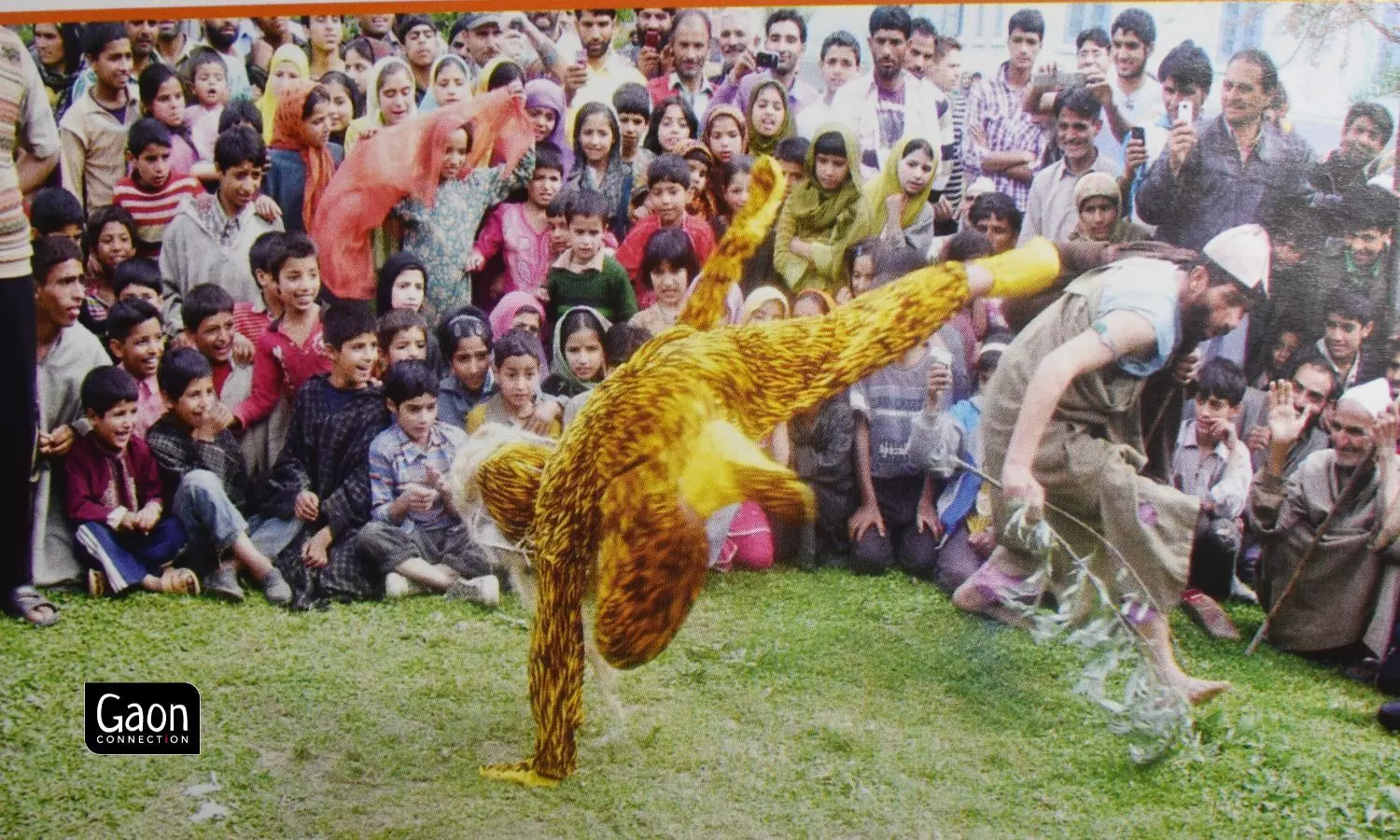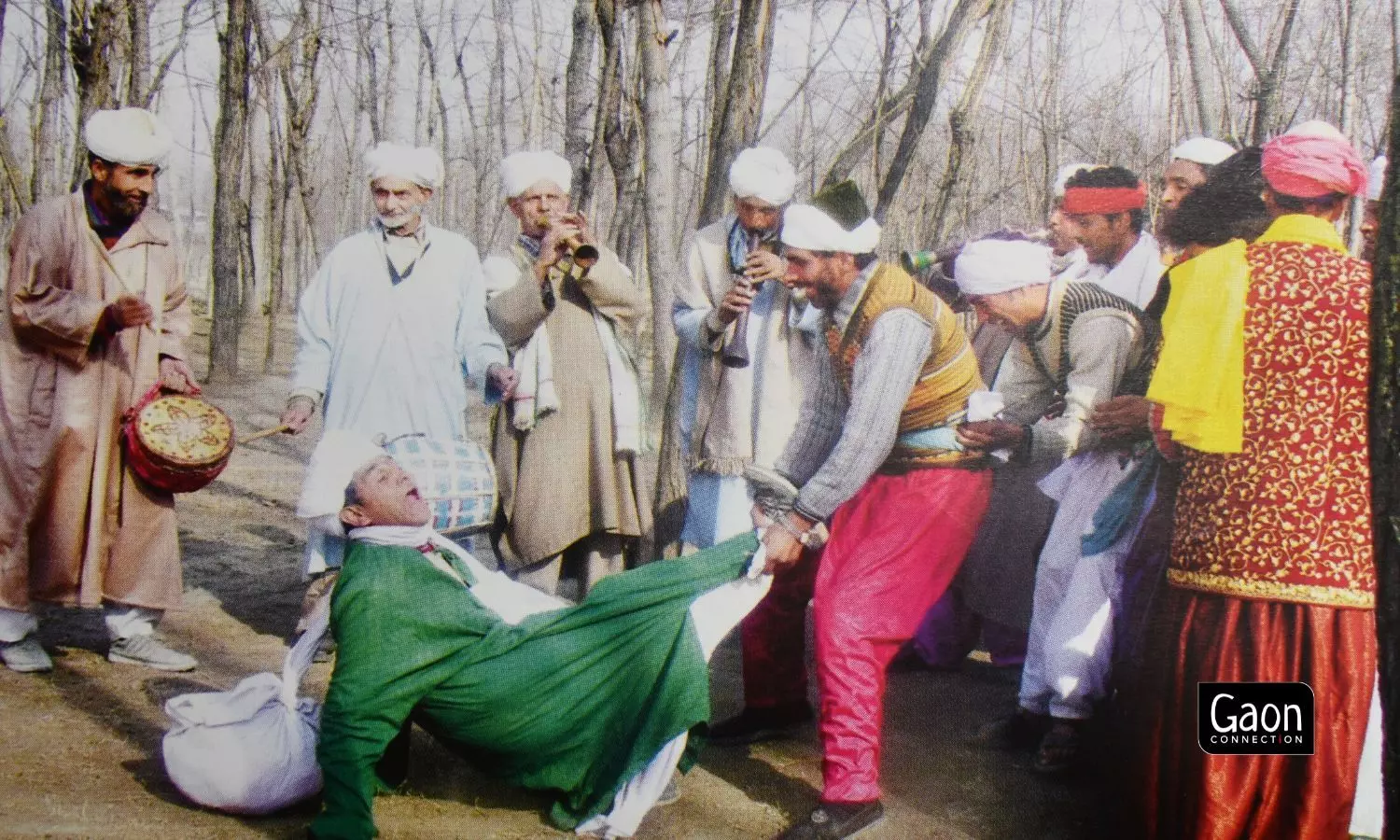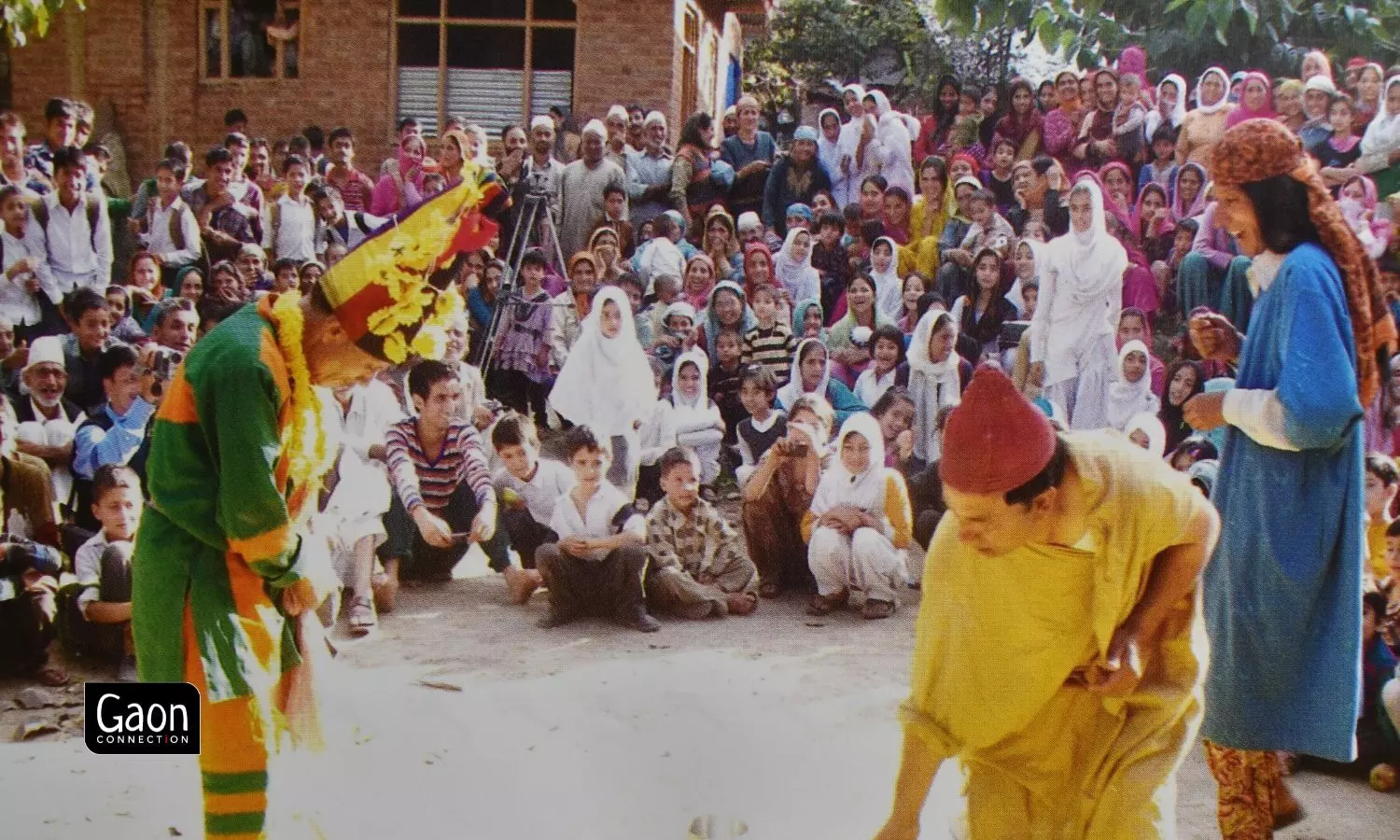Budgam, Jammu & Kashmir
Bhand Pather is the traditional folk theatre of the Kashmir valley. The word Bhand stands for a jester while Pather means a performance or theatre. The Bhands are still extant, though the popularity of their entertainment is waning, like almost every other traditional folk art form in the country.
As part of the folk theatre, a community of actors, the Bhands, travel from village to village in colourful outfits carrying the dhol, nagara and the sornai (a wooden flute). Their skits are usually centred around social issues and through lampoons, music and dance, they bring up problematic issues in politics, society and in religion. It is believed that the folk theatre of Bhand Pather became popular in the Kashmir valley around 1324.

The skits are usually centred around social issues and through lampoons, music and dance, they bring up problematic issues in politics, society and in religion.
Ali Mohammad follows Sufism. The 84-year-old Bhand artist who lives in Thokerpora, Pulwama, plays the flute. “I am the 12th generation in my family to be part of Bhand Pather. For 58 years now, I have been playing the sornai at Charar-e-Sharief,” he told Gaon Connection.
“I leant to play the sornai as a child and I am the only one in my family who continues to be a Bhand artiste,” the Bhand artiste added. Charar-e-Sharief is a Sufi Muslim shrine and mosque situated in the town of Charari Sharief in Budgam district of Jammu and Kashmir.
Also Read: The Dying Craft of Kashmiri Wooden Utensils
Bhands in the days gone by were essential mirrors of society. Women’s rights, discrimination, casteism and racism, gender identity… there was nothing they would not touch upon.
“The earliest mention of Bhand Pather is to be found in the shruks (sayings) of Sheikh ul Alam, a 14th-century mystic of Kashmir,” Ghulam Mohidin Aajiz, a prolific writer about folk art, told Gaon Connection. He was awarded a Senior Fellowship by the Ministry of Culture in folk art in 2018. The fellowship is awarded for undertaking research oriented projects in the field of culture. The 75-year-old writer is from Wathora in Budgam district.
Oral Tradition of Bhand Pather
Bhand Pather artistes have no written scripts that they perform from. Everything has come down to them word of mouth.
It was only Mohammad Subhan Bhagat from Anantnag (1927-1993), from a family of Bhand himself, who wrote extensively about the plays the Bhands performed. It was an effort on his part to revive the fading folk art. Significant amongst his works on Bhand Pather folk theatre are Taqdeer, Kasher Lukka and Deevai Rang.

Shakargah Pather performances related to the environment and its protection.
The Sangeet Natak Academy awarded Manzoor Ahmad Bhat, a 34-year-old Bhand artiste in 2010. He has performed the Sufiyana Mosiqi, classical music from Kashmir across the country and even in many places abroad.
While earlier the Bhand performed at Buddhist monasteries and temples, it is now restricted to Islamic shrines.
There are different kinds of performances the Bhands perform. There are many versions of Pather with layers of meanings and metaphors.
Also Read: Mahashivratri And The Stories My Mother Told Us
Bhand Doukher (meaning supplication) was when the performers would walk without footwear to distant shrines to pray for something. And, people believed that whatever they prayed for, would be granted.
Shakargah Pather were performances related to the environment and its protection.

There are different kinds of performances the Bhands perform. There are many versions of Pather with layers of meanings and metaphors.
Watel Pather depicted the lifestyle of a Watal tribe (a community of cobblers).
Gosain Pather is rooted in Hinduism in the Valley, but is much more than mere religion as it deals with the search for the ultimate truth.
The Disappearing Art of Folk Theatre
Gulzar Ahmed was once known as the Comedy King of Kashmir, but now hardly anyone remembers him. A Bhand himself, Gulzar quit his studies when he was in the 7th grade and devoted his life to Bhand Pather.
“The government is not interested in preserving the art form. We have no support, no recognition nor any pension schemes available to us,” the 59-year-old Gulzar told Gaon Connection. “Bhands give their life to the art, but when they are old and done, they are left with the regret that they did not choose a more lucrative profession,” he added. He also feared that the art form would soon be a thing of the distant past.
Also Read: Reviving the Kashmiri Craft of Namda Making
Fayaz Ahmad who has been associated with Bhand Pather for the past 45 years, is the general secretary of Valley Folk Theatre, under which there are 72 registered theatres.
“The art form needs to see some kind of profit. It is finding no space for itself to grow and flourish. If it was given special status with an assured income to the practitioners, it would not be in the state it is now, facing extinction,” Fayaz Ahmad told Gaon Connection.

While earlier the Bhand performed at Buddhist monasteries and temples, it is now restricted to Islamic shrines.
According to him there have been no opportunities given to the Bhand performers by the Cultural Academy of Kashmir. “Until four years ago retired artistes got some pension from the academy, but they have received nothing for the past four years,” Ahmad said.
Sofi Sahil, a resident of Charar-e-Sharief is pursuing his Masters in Economics. The 23-year-old student said the advent of mobile phones and social media has made folk art redundant. “I remember watching the Bhand Pather at Charar-e-Sharief when I was 12 years old,” he recalled. “But now I only watch Bollywood and Hollywood films. I can pick and choose what I want to see on my mobile,” he told Gaon Connection.
Safoora Hilal is a freelance journalist based in Kashmir. She tweets @Safoora_hilal.




















